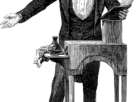Jane Austen Books: An In-depth Exploration of the Timeless Literary Masterpieces

Introduction
For those who are genuinely interested in the works of Jane Austen, this article aims to provide a comprehensive understanding of her books. Recognized as one of the most prominent and influential novelists in English literature, Jane Austen’s works continue to captivate readers even after two centuries. This article delves into the significance of Jane Austen books and provides an overview of their historical development.
I. The Importance of Jane Austen Books

1. Jane Austen’s Literary Legacy
– Jane Austen’s books hold a significant place in the canon of English literature, showcasing her keen observation of societal norms, class distinctions, and the role of women in the 19th century.
– Her novels continue to resonate with contemporary readers due to their timeless themes, relatable characters, and masterful storytelling techniques.
– The enduring popularity of Jane Austen books can be attributed to their ability to transcend time and place, offering readers a glimpse into the human condition.
2. Themes Explored in Jane Austen’s Books
– Love and Marriage: Austen’s novels explore the complexities of love and courtship, often challenging societal conventions and highlighting the importance of mutual respect and emotional compatibility.
– Social Class: Austen’s works shed light on the rigid class system of her time, critiquing its impact on individuals’ lives and relationships.
– Feminism and Female Agency: Austen’s heroines defy societal expectations and challenge gender norms, emphasizing the importance of women’s independence and intelligence.
II. Historical Development of Jane Austen Books
1. Early Works and Publication Challenges
– Jane Austen began her writing career at a young age, crafting stories and plays for her family’s amusement.
– During the late 18th century, Austen wrote her early novels, including “Northanger Abbey,” “Sense and Sensibility,” and “Pride and Prejudice.”
– Despite her talent, Austen faced numerous challenges in getting her works published, struggling with publishers who did not see the potential in her novels.
2. Success and Recognition After Death
– It wasn’t until after Austen’s death in 1817 that her novels gained widespread recognition and acclaim.
– Her brother, Henry Austen, played a crucial role in publishing her final two novels, “Persuasion” and “Northanger Abbey” (1818).
– Posthumously, Jane Austen’s reputation grew, and her books became highly sought after by readers eager to delve into her witty social commentaries and astute character studies.
3. Influence on Later Authors and Adaptations
– Jane Austen’s works have influenced countless authors, serving as a foundation for the development of the modern novel.
– A notable example is Charlotte Brontë, who admired Austen’s ability to craft complex female characters, which is evident in her novel “Jane Eyre.”
– The popularity of Austen’s books has also fueled numerous film and television adaptations, contributing to their continued relevance and exposure to wider audiences.
III. Recommended Jane Austen Books for Art Lovers and Collectors
1. “Pride and Prejudice”
– Considered Austen’s most beloved novel, “Pride and Prejudice” explores the themes of love, marriage, and societal expectations.
– With its memorable characters like Elizabeth Bennet and Mr. Darcy, “Pride and Prejudice” has become a cultural touchstone, inspiring numerous adaptations and interpretations.
2. “Sense and Sensibility”
– “Sense and Sensibility” delves into topics of heartbreak, resilience, and the importance of self-discovery.
– This novel showcases Austen’s ability to balance wit and sentiment, providing readers with a profound exploration of love and human nature.
3. “Emma”
– “Emma” is a delightful tale of self-discovery, following the heroine’s journey as she navigates her own romantic entanglements and learns the value of humility and empathy.
– The novel displays Austen’s mastery of comedic timing and richly drawn characters.
IV.
Conclusion
Jane Austen’s literary contributions have left an indelible mark on the world of literature. Her keen insights into human nature, wit, and social commentary continue to resonate with readers across generations. As art lovers and collectors, exploring Jane Austen books opens a door to a world of thought-provoking storytelling and an exploration of the nuances of human relationships. Whether you’re drawn to the romance of “Pride and Prejudice,” the resilience of “Sense and Sensibility,” or the charm of “Emma,” Jane Austen’s novels offer an immersive experience that will captivate and inspire for years to come.











